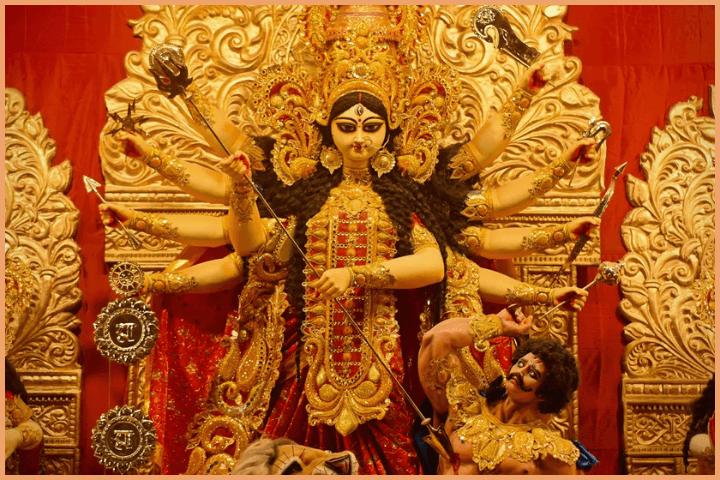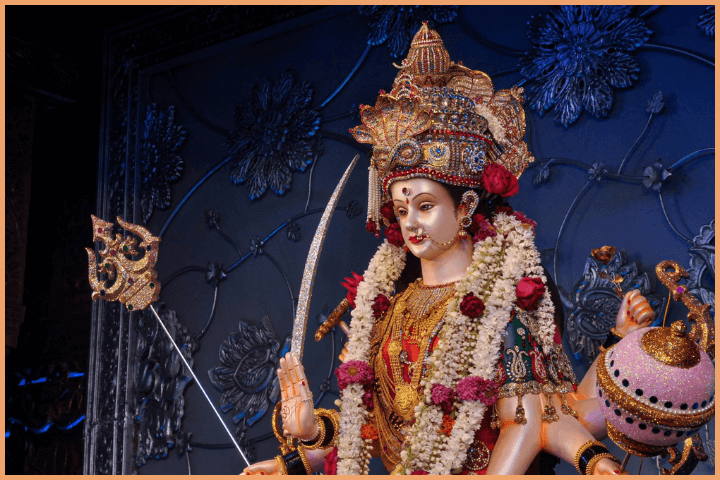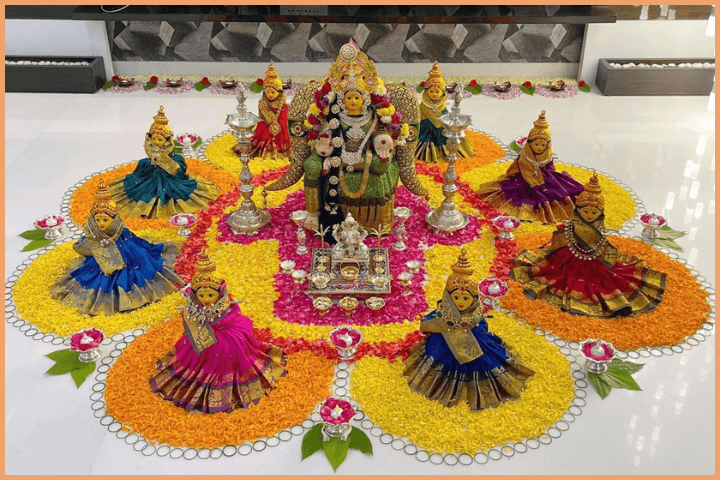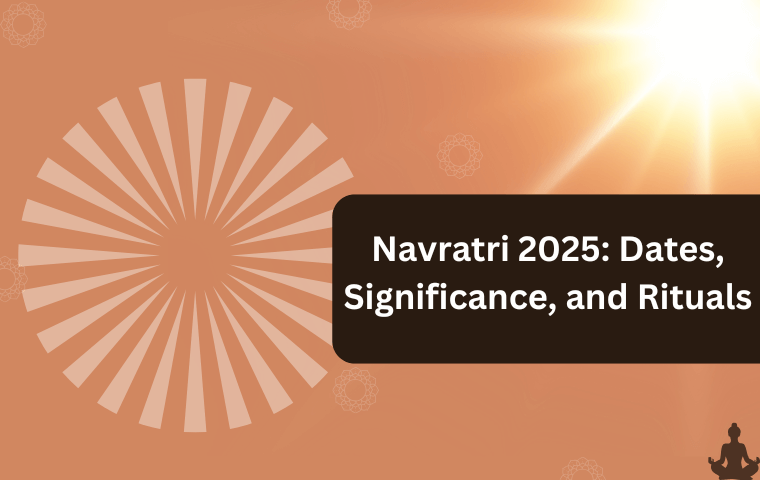Navratri is a sacred Hindu festival celebrated over nine nights in devotion to Goddess Durga and her nine divine forms. The festival celebrates the victory of good over evil and people observe it twice a year: Chaitra Navratri in spring and Sharad Navratri in autumn. In 2025, these two Navratris will hold special spiritual significance for devotees across India and the world.
Chaitra Navratri 2025 Dates and Significance

Chaitra Navratri marks the Hindu New Year in many regions of India. In 2025, it will begin on March 30 (Sunday) and conclude on April 7 (Monday), with Ram Navami celebrated on the final day. Devotees dedicate each day of this festival to a distinct form of Goddess Durga, known as Navadurga, representing different virtues and cosmic powers.
Chaitra Navratri 2025 Calendar
- March 30, 2025 – Ghatasthapana & Shailputri Puja (Pratipada)
- March 31, 2025 – Brahmacharini Puja (Dwitiya)
- April 1, 2025 – Chandraghanta Puja (Tritiya)
- April 2, 2025 – Kushmanda Puja (Chaturthi)
- April 3, 2025 – Skandamata Puja (Panchami)
- April 4, 2025 – Katyayani Puja (Shashti)
- April 5, 2025 – Kalaratri Puja (Saptami)
- April 6, 2025 – Mahagauri Puja & Kanya Pujan (Ashtami)
- April 7, 2025 – Siddhidatri Puja & Ram Navami (Navami)
Sharad Navratri 2025 Dates and Significance

People widely celebrate Sharad Navratri, also called Maha Navratri, in autumn with grand rituals and festivities. In 2025, it will commence on September 22 (Monday) and end on October 1 (Wednesday). The festival concludes with Vijaya Dashami (Dussehra) on October 2 (Thursday), marking the victory of Goddess Durga over Mahishasura.
Sharad Navratri 2025 Calendar
- September 22, 2025 – Ghatasthapana (Pratipada)
- September 23, 2025 – Brahmacharini Puja (Dwitiya)
- September 24, 2025 – Chandraghanta Puja (Tritiya)
- September 25, 2025 – Kushmanda Puja (Chaturthi)
- September 26, 2025 – Skandamata Puja (Panchami)
- September 27, 2025 – Katyayani Puja (Shashti)
- September 28, 2025 – Kalaratri Puja (Saptami)
- September 29, 2025 – Mahagauri Puja (Ashtami)
- September 30, 2025 – Siddhidatri Puja (Navami)
- October 1, 2025 – Vijaya Dashami (Dussehra)
Religious and Mythological Importance
Navratri celebrates the divine power (Shakti) of Goddess Durga in her various manifestations. According to mythology:
- In the battle against Mahishasura, the gods combined their energies to create Goddess Durga. She fought the demon for nine nights and finally vanquished him on the tenth day, symbolizing the victory of good over evil.
- Another legend ties the festival to Lord Rama, who invoked Goddess Durga’s blessings before defeating Ravana. His triumph is celebrated as Vijaya Dashami.
Navratri Rituals and Traditions
During Navratri, devotees follow various rituals and customs to honor Goddess Durga, seek her blessings, and celebrate with devotion and joy.
1. Ghatasthapana (Kalash Sthapana)
Navratri begins with Ghatasthapana, where a clay pot (kalash) symbolizing the Goddess’s energy is placed in homes and temples. Devotees sow barley seeds around the Kalash, which grow during the festival, symbolizing prosperity.
2. Fasting and Prayers
Many devotees observe fasts during Navratri 2025, consuming only satvik food like fruits, milk, and nuts. On Ashtami and Navami, people break their fast by offering food to young girls (Kanya Pujan), symbolizing the divine feminine.
3. Daily Worship of Navadurga
Each day is dedicated to one form of Goddess Durga, and specific mantras, prayers, and bhajans are chanted. Aartis and devotional songs fill temples and homes with spiritual energy.
4. Kanya Pujan and Sandhi Puja
On Ashtami and Navami, young girls are worshipped as Goddess Durga’s incarnations. In Eastern India, Sandhi Puja, performed at the juncture of Ashtami and Navami, holds special significance.
5. Dandiya and Garba
In Gujarat and Maharashtra, Garba and Dandiya Raas are performed during Navratri nights. Devotees dress in traditional attire and dance with sticks to rhythmic music, celebrating with joy and devotion.
Navratri Colours and Their Significance
During Navratri 2025, each day is associated with a specific color, symbolizing different virtues and attracting divine blessings:

- Day 1: Yellow – Happiness and positivity
- Day 2: Green – Prosperity and New Beginnings
- Day 3: Grey – Balance and neutrality
- Day 4: Orange – Energy and creativity
- Day 5: White – Peace and purity
- Day 6: Red – Passion and strength
- Day 7: Royal Blue – Elegance and confidence
- Day 8: Pink – Love and compassion
- Day 9: Purple – Dignity and wisdom
Differences Between Chaitra and Sharad Navratri
While both Navratris share common rituals, they differ in terms of timing and cultural significance:
- Chaitra Navratri occurs in spring (March-April) and coincides with Ram Navami. It marks the Hindu New Year in many regions.
- Sharad Navratri is celebrated in autumn (September-October) and ends with Vijaya Dashami, symbolizing Durga’s victory over Mahishasura.
Tips to Celebrate Navratri 2025
To make the most of Navratri 2025, you can:
- Prepare a Navratri altar with images or idols of Goddess Durga, fresh flowers, and diyas.
- Participate in prayers and aartis daily with family and community.
- Follow a fasting plan, consuming only satvik food.
- Engage in cultural events like Garba, Dandiya, and Durga Puja celebrations.
- Contribute to charity by feeding the needy or donating essential items.
Celebrating Navratri 2025: A Time for Devotion and Joy
Navratri 2025 is a time to embrace spirituality, celebrate feminine divinity, and seek blessings for health, prosperity, and peace. Whether you observe Chaitra Navratri or Sharad Navratri, the festival offers an opportunity for devotion, self-reflection, and joyous celebrations. May Goddess Durga bless everyone with strength, happiness, and success during Navratri 2025.

